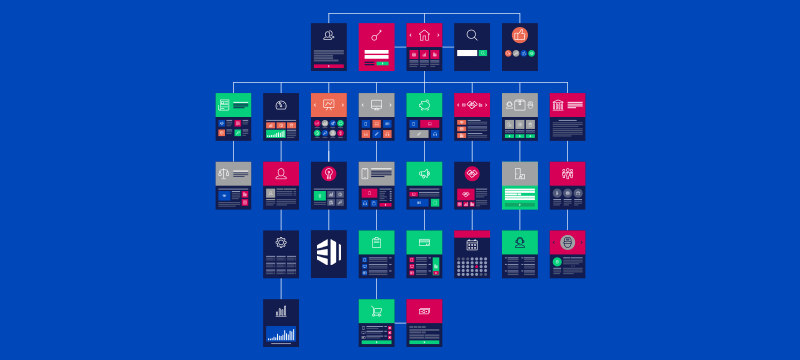Did you know that a poorly structured website can affect how much money it earns? This is because it can negatively impact both the user experience and the site’s search engine ranking. In this post, we’ll discuss why site structure is important and explain how to get it right.
What is site structure?
Site structure is how you organise and arrange the content of your website. This includes how you group your pages, products and posts into categories and how you help people find your content through navigational links.
The importance of site structure
The main reason you need a good site structure is to improve the experience of your visitors. They will come to your website with an intention and a well-structured site will make it as easy as possible for this to be fulfilled. However, the harder it is to find a product, get information about shipping or access the shopping basket, for example, the more visitors are likely to give up trying. As a result, your sales and leads will suffer.
Another reason is that a well-structured website is an important element of your SEO and can improve how well your site ranks in search engine results. Search engines need an effective structure if they are to find and index all your pages and posts.
Without this, they won’t be findable via a web search. A good structure also lets search engines know which are the most important pages on your site so that they can prioritise them in results – after all, you don’t want your privacy policy page outranking your homepage.
Creating a hierarchical structure
A hierarchical structure is one in which your content is organised according to its status or importance. Essentially, it is like a layered pyramid, with the most important things on the top layer and the layers below, decreasing in importance towards the bottom.
Your homepage should be at the top of your pyramid structure. This is the site’s entry point and the place from which visitors should be able to find out where to go next. Of course, you can’t mention and link to every other page of your website from the homepage as this would make it confusing for visitors and search engines. What it should include, however, is information about and links to the next level of your structure – the website’s top-level categories.
When a visitor clicks on a link to one of the top-level categories, the page they arrive on should provide information and links about that category’s sub-categories. In some cases, perhaps with large retail sites, there may be a need to add even lower levels of the pyramid structure.
The pathway someone might take on a retail site, for example, could be – homepage > men’s clothing > trousers. On a banking site, it could be homepage > loans > mortgages.
Links, menus and search bars
Links, menus and search bars are all important as they help customers find the things they are looking for.
Links should be used to take people from the page they are on to the next hierarchical level. Keeping it simple like this, makes it easier to navigate the site and enables you to control the pathway that a user takes.
Menus are vital features of websites that visitors expect to find at the top of a page. These should list the main categories and link to them. You can have multi-level menus too if you have a lot of sub-categories, though adding too many menu items may make it harder for the user.
Search bars are needed for large websites, especially those with lots of products, blog posts or other specific content that would be hard to list in a menu or provide a specific link to. These are also great if you make use of tags as well as categories.
Tags are helpful because they don’t need to be part of a hierarchical structure and so can help people find things from different categories. For example, the tag ‘summer’ on a clothing site can help visitors find items from different clothing categories that are all ideal for summer wear.
Contextual links
While website structures tend to revolve around a company’s key areas of business, there are often other pieces of information that customers want to know, which can be crucial in helping make a purchasing decision. For example, they may want to know what your shipping times are, your returns or cancellation policy and so forth.
It is possible to create a customer service category for all these pages, and a special menu for these pages can often be found in the footer. However, to ensure anyone looking at a product can still find it, you can add contextual links – in other words, links within your content.
Conclusion
A good site structure can help your website provide a better user experience and SEO, thus reducing user abandonment while improving search engine ranking. As a result, you could get more traffic with visitors more likely to make a purchase.
For fast, secure and reliable web hosting, visit our homepage.



